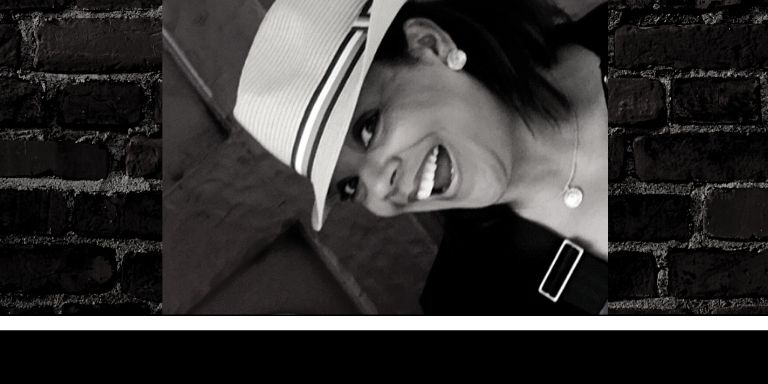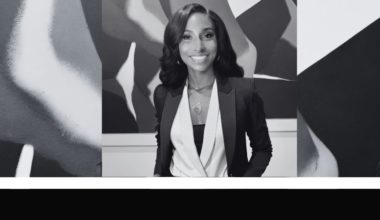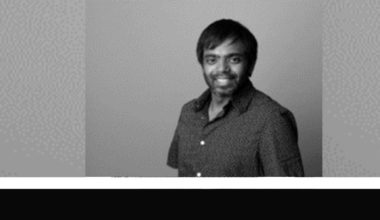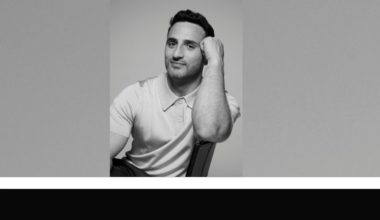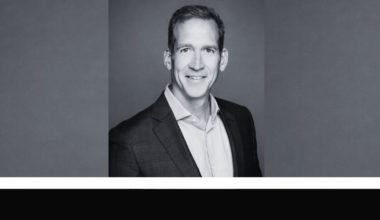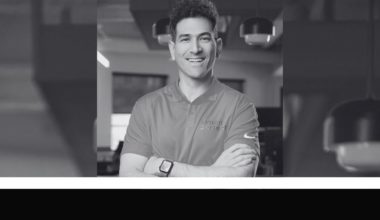D. Nikki Wheeler is the author of See. Spot. Run. A Media Relations Playbook for Getting More Coverage Faster. She is a noted contributor to leading business publications. A corporate and crisis communications professional by day, Nikki has a passion for fiction and works on her passion projects at night, following a rigorous and disciplined writing schedule.
Nikki has a passion for travel, a penchant for adventure, and a never-ending sense of wonder. She lives in Colorado with, according to her niece, “A lotta pets.” She is currently in development with a streaming web series, FABULIST, with SIDEWAY.
Tell us a little bit about your background and how you ended up writing a book?
I began my career in Washington, D.C. as a legislative correspondent for my home state senator. After the senator retired, I continued in politics taking a job as a policy director for then Texas Governor George W. Bush. After a particularly difficult legislative season, I was talking with my mentor about my career, and she made an observation that changed the course of my life. She said, “Have you ever thought about media relations? You were always so good at working with reporters and connecting people with information.”
After that conversation, I left my career in politics and started on the very bottom rung of the public and media relations ladder. It was a great time for me. I went to work with a small boutique firm that represented the interests of some very influential companies. I was a sponge. I soaked up everything I could about responding to media, running down leads, developing third-party sources, competitive intelligence, and the ins and outs of crisis and risk communications.
To this day I encourage people to take risks and be brave enough to step off the path they are on if their work is not exciting, engaging, or bringing them joy.
After my time in the agency. I went in-house. I was eager to learn more and to understand the differences between working in an agency and working in a company. I built up my experience working at a not-for-profit organization where I discovered an unmet need in the world of communications, the ability to develop and implement integrated marketing communications program (IMC).
IMC was new back then. There was an unspoken rule, the marketing team does marketing, or paid efforts, the media team does news, or earned efforts. Practitioners were encouraged to stay in their lanes. This was the nineties and things were changing. With the adoption and expansion of internet access and home computing, a new player entered the field, owned content.
With the explosion of blogs, online news outlets, and social media, businesses had a new channel to reach audiences and they needed a holistic strategy, one that blended the disciplines to achieve results.
With IMC success in the not-for-profit space. I grew my career and expertise to represent clients in the entertainment, gaming, telecommunications, and oil and gas industries.
Through my work, I was able to provide media coaching, speak on panels and deliver keynote addresses. After one extended road trip of coaching sessions and talks, my mom said to me, “Why don’t you just write a book? You could put all of your experiences, insights, and training tips into one practical guide.” Thus, “See.Spot.Run. A Media Relations Playbook for Getting More Coverage Faster,” was born. The title was inspired by my dog George. His likeness graces the cover.
As I was coming up in the industry, one thing that annoyed me about the guides and books that I read was, they were heavy on philosophy, but light on practicality. I’d finish reading a chapter, look back over what I’d read, and think to myself, “That was great, but how do I do it? Where do I even start?” and close the book in frustration. With See.Spot.Run, I did something different than other guides, I provide actual “how-to” examples, step-by-step processes, and sample plans anyone can use to develop and implement effective communications programs.
What do you hope your readers take away from this book?
What I hope readers take away from See.Spot.Run. are actionable, practical skills they can put to use right away. I hope they also take a sense of calm and peace in knowing they are not alone and sometimes the struggles are real. In sharing real examples from my work with my clients, and real situations where things did not go well, I also hope readers can laugh, empathize and recognize a bit of themselves in the pages. When I get together with other communications professionals, we spend so much time sharing stories about our clients, in full confidentiality of course, and learning from each other how we can improve as professionals.
That is something else I hope readers take away, media relations is a profession. Contrary to what some may believe, someone doesn’t just wake up one day and say, “PR, that’s what I’m going to do.” Real communications, media, and public relations professionals have spent years in education and training honing their skills. As I shared, I started my career on the lowest rung of the ladder. What I didn’t say is I was also taking classes, studying with leaders from the crisis and risk communications institute. Learning the science of communications, messaging building, and how audiences consume information. You’ll note I talk in threes, that’s because it’s easier for your mind to digest what I’m saying is it’s in threes.
I also say this for the benefit of anyone who may be interested in hiring a media or public relations professional. Don’t be fooled by someone who talks a good game. Dive deep into their experience, ask them about metrics, strategy, and client and media management. A true practitioner should be able to share a portfolio of work and talk through the strategy, goals, and outcomes of the initiative and how the approach would apply to what you’d like to achieve for your business.
The profession of media and public relations suffers when aren’t diligent about demanding excellence and working with true professionals.
What are the top three tools you are currently using to write, publish, and promote your books?
The top three tools I am using to write, publish and promote my book are Twitter, I love Twitter, and being able to share parts of the book with a broad audience.
I am also working with ACX, an awesome company where I have sourced great voice talent for the Audible version of See.Spot.Run., which will be available to download in October, just in time for National Book Lovers month.
The last tool is LinkedIn, it’s just a great way to connect people with useful business information.
In terms of writing, I am working on an update to See.Spot.Run, which leverages expert voices from a few different disciplines to talk about what happens when things go wrong and lessons learned from engagements that didn’t go to plan. For this, I am capturing voice recordings. There is this great set of tools that I love from Voice Dream that not only capture recordings, but has the capability to playback text, so it’s awesome to be able to listen to how the book sounds or how an interview sounds using the Voice Dream tools.
What were the top three mistakes you made publishing your book what did you learn from them?
- My goodness, so many lessons learned. First and foremost, understand the platform you are publishing on and how files are loaded and shared. Remember those plans and charts I was so proud of including? Well graphics don’t automatically transfer on all platforms. Not taking the time to understand the graphic and image requirements for the platform you are using can really mess your book up and create a terrible experience for readers.
- The second lesson I learned is how important it is to invest in yourself and your project. We would all like to save money where we can. However, editing and proof reading are not areas to skimp. I learned, it is important to hire a good copy editor and a good proofreader to give your material a final polish and once over. Let’s face it, sometimes we can be too close to our work and having read it, and reread it and reread it, we miss things. If you’re anything like me you probably share your work with friends and family for comment and critique, which is great, but nothing beats budgeting for and including the cost of a reputable, third-party copy editor and proofreader.
- Which brings me to my third lesson learned. Writing and publishing a book is a business. You need to think about your work in three phases, planning, execution, and marketing. These days we, as writers, don’t have the luxury of writing something awesome, releasing it to the world and then escaping to our hideaway on the remote island of Bimini. We must be like Jackie Collins and hustle. Part of that hustle is setting aside budget for advertising and promotion. I mentioned Twitter. Twitter ads are great, but a mistake I made was not understanding the cost and daily spend of putting those ads out. I got a very unpleasant surprise when a bill for one thousand dollars appeared on my credit card.
When will you consider your book a success?
This is an interesting question. I would say See.Spot.Run. is a success based on the number of people who have reached out to me on Twitter or LinkedIn or who I have spoken to who have told me, “I read your book, I love the practical advice,” or “I read your book I appreciate the stories and how easy you made it for me to understand how to create a plan.” The fact that people have read the book, that they took something of value from it, and that it helped them to be successful or feel a little less alone in the world of communications where crazy things happen and ridiculous requests are made, signals success to me. Downloads are nice as well.
Can you share a snippet that isn’t in the blurb or excerpt?
Stepping on stage, I looked out on a sea of disinterested faces. Then, I did something I advise my clients never to do, I went off-book. I pulled out the Wall Street Journal and held it up, “Is getting in this publication your goal?” Heads nodded. I said, “I’m here to help you get the coverage you deserve.”
How have the pandemic and Lockdown affected you or your new business?
The pandemic and being in lockdown has really driven home for me the importance of setting boundaries and establishing ways of working.
I’ve always been fortunate enough to have an office in my home. As a writer, I set and communicate strict guidelines for when I’m working. My family and friends know I write every night from six to nine. I established this because I would get home from the office, have dinner, walk the dog, and then head into my home office to work.
Now, with all work being done from home I had to establish a new routine and that meant adapting my home office to fit my day job and my writing at night. For me, it was important to have separate spaces. I have one desk where my day job lives. I check into that desk at eight. I work there until about ten when I go downstairs to the café, also known as my kitchen, and grab a cup of coffee and a mid-morning snack, then it’s back to the office until lunchtime. My last break of the day is at three, then I check out of that office at five.
At five, I grab some dinner, walk the dog and check into my writing office, a separate desk with a separate computer, where I write until nine. For me, it is all about discipline, boundaries, and creating dedicated spaces where I can work.
I can’t say enough about creating space for yourself. In talking with friends, they were struggling because they didn’t think they needed a space to work. Well, not having one made it difficult for them to turn work off. When your office is your kitchen table it’s easy to eat breakfast and work, eat lunch and work, eat dinner and work. I encouraged many of my friends to just try it, carve out a space, even if it’s a tiny desk in a little corner, and see the difference. It works.
What have been your biggest challenges and how did you overcome them?
When I first started writing my biggest challenge was time and focus. I had so many ideas, so many things I wanted to cover, so many ways I wanted to go that I felt overwhelmed by the project and not sure where to start. About that time, I remember reading a book called THE ONE THING, and from it, I began to apply, what I like to call One Thing Thinking to my work. So, when I face a challenge, I ask myself, “What’s the one thing I need to do today that will help me get to my ultimate goal?”
I found that by focusing on one thing, and it didn’t have to be big, I could chip away at all the things swirling around in my mind and make progress toward filling in the big picture. I use one thing thinking to this day. When I’m feeling pressure and stress and like I’m drowning in working and deliverables, I stop, I ask myself, “In all of this, what is the one thing you have to do today?” Once I have completed that one thing, I feel a sense of satisfaction and then I am able to go on to the next one thing. For me, this approach removes mental paralysis and frees me up to celebrate daily milestones.
What is the one thing you wish you knew before publishing your book?
I wish I knew how much work it is to break through, get readers and promote the work. I equate it to running for congress. You spend all your time writing the book, then you do all the work to get it published and you’re not done, because… guess what, someone else also wrote a book and those one hundred other people are out there, just like you are, working to get readers, to get people to download, to write positive reviews. If that’s not enough, you have to make time to promote your book on tour and through speaking engagements. It can be exhausting time-consuming work that takes you away from what you really love to do, which is writing and sharing stories. All I can say is plan for it and carve out time to do it because it’s important.
Please share one thing new self-publish authors can do to gain more reviews on Amazon.
For me, it was all about getting people who read See. Spot. Run. to write and post reviews on the site. The more reviews, the higher the ranking. The other thing I did was thank reviewers. I would take their comments and post them on social channels and professional forums with a link to the book. Sharing the comments increased interest and drove more people to the site. The other thing I did was giveaways and discounts aligned with key months and observance days. Like on International Women’s Day, I promoted See. Spot. Run. to women and entrepreneurs and offered it for a special one-day promotional price in recognition of International Women’s Day.
Can you share some of the marketing techniques that have worked for you when promoting your book?
I know I’ve talked a lot about the importance of marketing and promotion and shared some tips, tricks, and techniques I’ve used, but I’d like to take a step back and suggest some concrete steps.
- First, it all starts with a work back plan from the day your book launches. The plan should answer the questions, “What’s my goal?” and “What does success look like?” Right now, you may be saying, “Duh, my goal is to sell books.” Of course, it is, but, how many books do you want to sell to whom, by when? Are you going to soft launch the book and test it with a target audience to get some feedback, reviews you can use to promote the book or are you going to push the button and go all in? These types of decisions can be made if you have a clear goal with measurable outcomes attached.
- Once your goal is clear what strategies are you going to use? Sure, you’ll tell your friends and family, but will you have a virtual launch party? Will do a Facebook Live Book Club where you invite people to talk about the book with you. Defining the right strategies begins with knowing your target audience, who they are, where they get their information and how they like to engage or interact with content. I point this out because there are one million and one tactics you can use, but with limited time, talent and treasure you want to focus on the things that will deliver the greatest return for the least amount of effort.
- Finally, the advice from Glen Gary Glen Ross holds true, “Always Be Closing.” Use every opportunity you can to insert your book into the conversation. Map out days of observation, build a tagging and hashtag strategy, schedule posts and make your content part of what people are talking about.
If you had the chance to start your career over again, what would you do differently?
If I had the chance to start my career over again, I wouldn’t do anything differently because as I was coming up, I was blessed with the confidence that I could do anything.
My mom, to who I dedicate all my work, is my biggest supporter. Anytime I was scared or anxious about a decision she would say, “Well… if you don’t like it, you can just come home.” With that safety net in my mind, I said “Yes.” When the senator approached me and asked me if I’d come to work in his office after I graduated from college, I said “Yes.” When a former colleague called me with a “unique challenge” in the Middle East, I said, “Yes.”
Saying “Yes,” taking risks, and accepting the adventure life has to offer has shaped my career, provided me with amazing experiences, and given me the opportunity to work with and learn from some of the most incredible people. When an opportunity presents itself, say “Yes,” and do it scared if you must, but have the confidence and faith in yourself that you can achieve great things. At the end of the day, if it doesn’t work out, you can just go home.
What’s a productivity tip you swear by?
My best productivity tip is time blocking followed by one thing thinking. In the morning I block my calendar so I can set my day. I block time for reading and responding to emails and I block time to get down to work. Switching tasking, multi-tasking, has been proven false. People are more productive and get more accomplished when they can focus on one thing at a time and manage their time. It works for me.
What helps you stay driven and motivated to finish writing your book?
When I was working on See.Spot.Run. I was motivated by the desire to live life regret-free. I wanted the satisfaction of looking back and knowing that I accomplished something that helped people to be successful, to create a plan, and to know that they aren’t alone.
Can you recommend one book, one podcast, and one online course for entrepreneurs and authors?
- There are so many fantastic books I would recommend. You’ve heard me talk about The One Thing, by Gary Keller. I give this book to all my team members. We use a planner. We talk about The One thing in our team meetings, and we use it as part of our quarterly reviews. I can’t say enough about it because once you let yourself consider and accept the possibilities on One Thing thinking it really can change your life and you’ll see extraordinary results.
- The other book I’d recommend is Story, by Robert McKee. Robert McKee is a renowned screenwriter, but more than that he’s a great storyteller. I have found no matter what line of work you’re in, the ability to tell stories sets you apart and can elevate you. What McKee does in Story is transformational. I’ve listened to it and read it at least twice. Whenever I’m starting a new writing project, I go back to it, and I keep McKee’s fundamentals on my desk as a guide to not only improve my writing but my craft as a storyteller.
What are you learning now? Why is that important?
Right now, I am learning the art and craft of screenwriting and producing. I love film and video as a medium. I’ve seen how people can be moved to tears by at thirty-second Budweiser commercial and I am fascinated by how “they” are able to do that. I have this never-ending thirst for knowledge, so I started taking screenwriting workshops, reading books on screenwriting, and studying the scripts for movies that touched or moved me. The entire process is fascinating and exhilarating.
If you only had $1000 dollars to promote a new book, knowing everything you know now, how would you spend it?
Truth be told, I wouldn’t. If I have done everything right, from writing, editing, copy editing, to creating and executing on an integrated marketing communications plan, then I would use that $1,000 to treat myself, a reward for all my hard work, which should be paying off.
My best piece of advice is to keep writing. I have notebooks full of ideas, ninety percent of them aren’t worth the paper they’re written on, but by continuously writing you can tease out the gems. My sister is an aspiring fiction writer. She calls me to talk about these amazing characters and their stories. I always ask her “What have your written?” She hems and haws about ideas in her mind and not having a full story. My challenge to her, just write one paragraph, five lines a day. It doesn’t have to make sense, it doesn’t have to flow day today, it’s just five lines. For my sister, five lines was nothing, she could make time in her busy day to write five lines. In a year five lines became five pages a day and now, she’s got a completed manuscript. Find your five lines, maybe it’s five words, but whatever you do, every day, write something.
What is your favorite quote?
As someone with degrees in philosophy and literature you’d think it would be something rich and layered like, “So we beat on, boats against the current, borne back ceaselessly into the past,” from the Great Gatsby or “Real courage is when you know you’re licked before you begin, but you begin anyway and see it through no matter what,” from Harper Lee’s To Kill a Mocking Bird, but my favorite quote, it’s framed in my office, has no attribution, it reads, “If it doesn’t make you nervous then you haven’t gone far enough.”
Who should we interview next and why?
I think you should interview entrepreneur and host of the Cool Careers Podcast, Sha Lee Hornsby. She is one of the most gracious and kind people you’ll meet. She has an incredible story that matches her amazing career journey, and she is just fun to talk to and learn from.
What is your definition of success?
A life of service lived with an appreciation of family, good friends, good food, good wine, a taste for adventure, and no regrets.
How do you personally overcome fear?
I personally overcome fear head-on. If something scares me I do it. My nephew calls me an unnecessary thrill seeker, who seems to lack the common sense to run. I think of it as being on a constant journey of discovery.
How can readers get in touch with you?
Readers can find me on LinkedIn or Twitter @TrickyNik127.
Random Author Interview: Melissa Smith – Your Book Is Waiting To Surprise You

